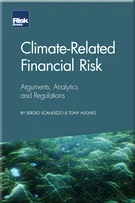Life insurance risk measurement and management
Introduction
Value-based management
The risk management and capital management frameworks
Credit risk measurement and management
Market risk measurement and management
Property and casualty insurance risk measurement and management
Life insurance risk measurement and management
Operational risk measurement and management
Economic capital
Regulation and regulatory capital
Ratings and rating agency capital
Conclusion: looking backwards and forwards
Acknowledgements
Glossary
7.1 INTRODUCTION
Similarly to other risk categories, the process and procedure of life insurance risk management for insurance companies can be grouped into the following four categories:
-
risk identification;
-
risk quantification and measurement;
-
risk management at individual policy and at portfolio level; and
-
risk monitoring and reporting.
Life insurance companies need to identify and capture life insurance risk exposures from all sources, which are generally further grouped into the following sub-categories:
-
mortality risk;
-
longevity risk;
-
morbidity risk for A&H products sold by life insurance companies;
-
policyholder behaviour risk, also known as lapse risk; and
-
expense risk, sometimes more broadly known as business risk.
Such exposures should be closely monitored and regularly reported as part of the overall risk management reporting requirement.
Proactive insurance risk monitoring and frequent and regular insurance risk reporting play a critical role in the successful execution of life insurance risk management policy and procedures. Insurance risk monitoring and reporting facilitate timely identification of issues such as the breach of limits and new or emerging risks so that these
Copyright Infopro Digital Limited. All rights reserved.
As outlined in our terms and conditions, https://www.infopro-digital.com/terms-and-conditions/subscriptions/ (point 2.4), printing is limited to a single copy.
If you would like to purchase additional rights please email info@risk.net
Copyright Infopro Digital Limited. All rights reserved.
You may share this content using our article tools. As outlined in our terms and conditions, https://www.infopro-digital.com/terms-and-conditions/subscriptions/ (clause 2.4), an Authorised User may only make one copy of the materials for their own personal use. You must also comply with the restrictions in clause 2.5.
If you would like to purchase additional rights please email info@risk.net










